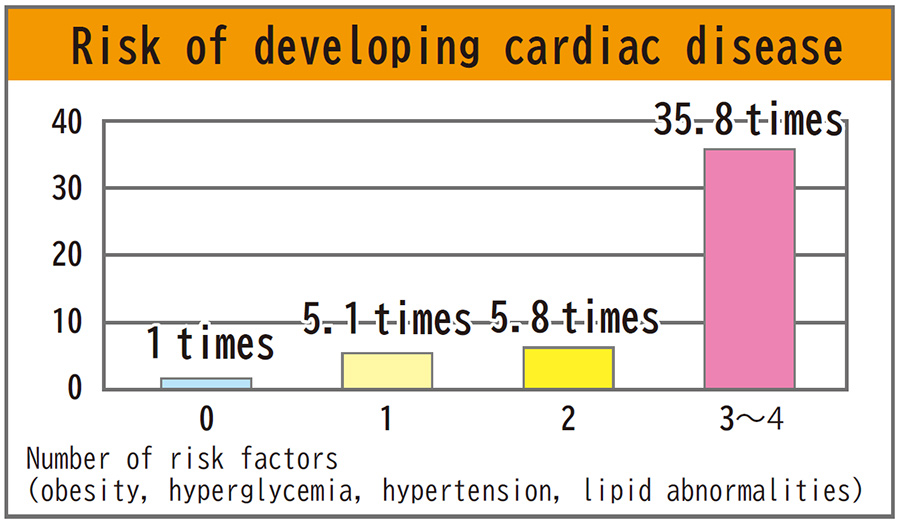~Starting Now: The path to completion
1.Physical Condition and Medical CheckupsChairman
Chairman of Medical Affairs Committee, Tokyo Athletic Association
Toshitake Mitsuhashi, M.D. 2 About goal setting and training
The recent marathon boom has led to an increase in the number of runners, and while it is an easy sport to start, it can also be dangerous. Especially when it comes to the actual race, it is easy for runners to overdo it even though they feel unwell, which can lead to unexpected injury. When competing in a marathon, one must take into consideration one's age and physical condition, as well as one's usual preparation, and pay close attention to safety.
Get a medical checkup

Most cardiac arrest during marathons are caused by ischemic heart disease (angina pectoris, heart attack, etc.). Ischemic heart disease can be detected during a medical checkup. To reduce the number of accidents caused by heart disease during a marathon, please undergo a medical checkup. According to the “Summary of Vital Statistics” published by the Ministry of Health, Labour and Welfare, heart disease (excluding hypertensive) was the second most common cause of death annually, after malignant neoplasms (cancer). It is also reported that the risk of heart disease is 5.1 times higher for those with one risk factor, 5.8 times higher for those with two risk factors, and 35.8 times higher for those with three to four risk factors, compared to those with no risk factors such as obesity, hyperglycemia, hypertension, and hyperlipidemia.
Health Checklist at the time of application
If any of the following items (1-10) apply to you, please consult your family physician.
- Has been diagnosed with or is undergoing treatment for cardiovascular disease (heart attack, angina pectoris, cardiomyopathy, valvular disease, heart failure, congenital heart disease, arrhythmia, aortic aneurysm, etc.).
- Has experienced sudden fainting spells (syncope).
- Has experienced chest pain or lightheadedness during exercise.
- Has a blood relative who died suddenly of ‘cardiac arrest'(sudden cardiac death).
- Has not had a physical examination in the last year or more.
- Is a man over 60 years of age.
- Has high blood pressure (hypertension).
- Has high blood sugar (diabetes).
- Has high LDL cholesterol and triglycerides (dyslipidemia).
- Smokes cigarettes.
A family doctor is a doctor close to you who takes care of your health and physical condition. Make sure you have a family doctor and consult with him or her about various examinations and race participation.
Created in 2013.4.11, rewritten 2024.11.30
Japan Association of Athletics Federations Medical Council
2.About goal setting and training
Marathon running is a very demanding sport. If you enter a marathon without a plan and without any idea of what you are doing, you may not be able to finish the race, but rather you may end up worsening your physical condition. To avoid such a situation, it is important to first set a goal and make a plan to achieve it.
The time limit for the MINATO CITY HALF MARATHON is 2 hours and 30 minutes; you can finish the race if you run at 7 minutes and 6 seconds/km. If you are aiming to finish the marathon, please check your daily running pace. Working backwards from the competition date, make a training plan that allows you to gradually improve your pace, starting with 1 km, then 5 km, then 10 km, and so on. When training, please refer to the following materials.
Approximate Finish Time Table
※Please scroll horizontally on your smartphone.
| Distance | 1km | 5km | 10km | 15km | 20km | Finish |
|---|---|---|---|---|---|---|
| Time | 7min06sec | 35min32sec | 1hour11min05sec | 1hour46min38sec | 2hour22min11sec | 2hour30min00sec |
| Running regularly | You do not have to run every day, but the key is not to miss three days in a row. |
|---|---|
| Increase the distance and frequency of runs. |
Rather than speed, gradually increase the distance and frequency of your runs so that you can run longer and more often. |
| Focus on sustained runs | Practice will focus on "sustained runs" such as timed runs (running for a fixed time, e.g., 30 minutes) and distance runs (running a fixed distance, e.g., 5 km). |
| Devise a place to run, make changes to where you run |
Set up some varied jogging trails around your home or along your commuting route. Also, don't always run on paved roads or you may get hurt. Try running on grass or dirt trails in parks, or even trail running in the mountains. Your running world will expand. |
| Make a practice plan | Make a weekly or monthly practice plan. The trick is to make the plan easy to follow so that you don't overdo it and fall behind. It is important to take small, steady steps to achieve your goals. If you include an entry to a running race in your plan, it will also become a "goal." If you have a goal, you will naturally get more into your training. It is a good idea to incorporate a 5-km running event into your running program around two to three months after you start running. You should find that running is fun in a new way. |





























